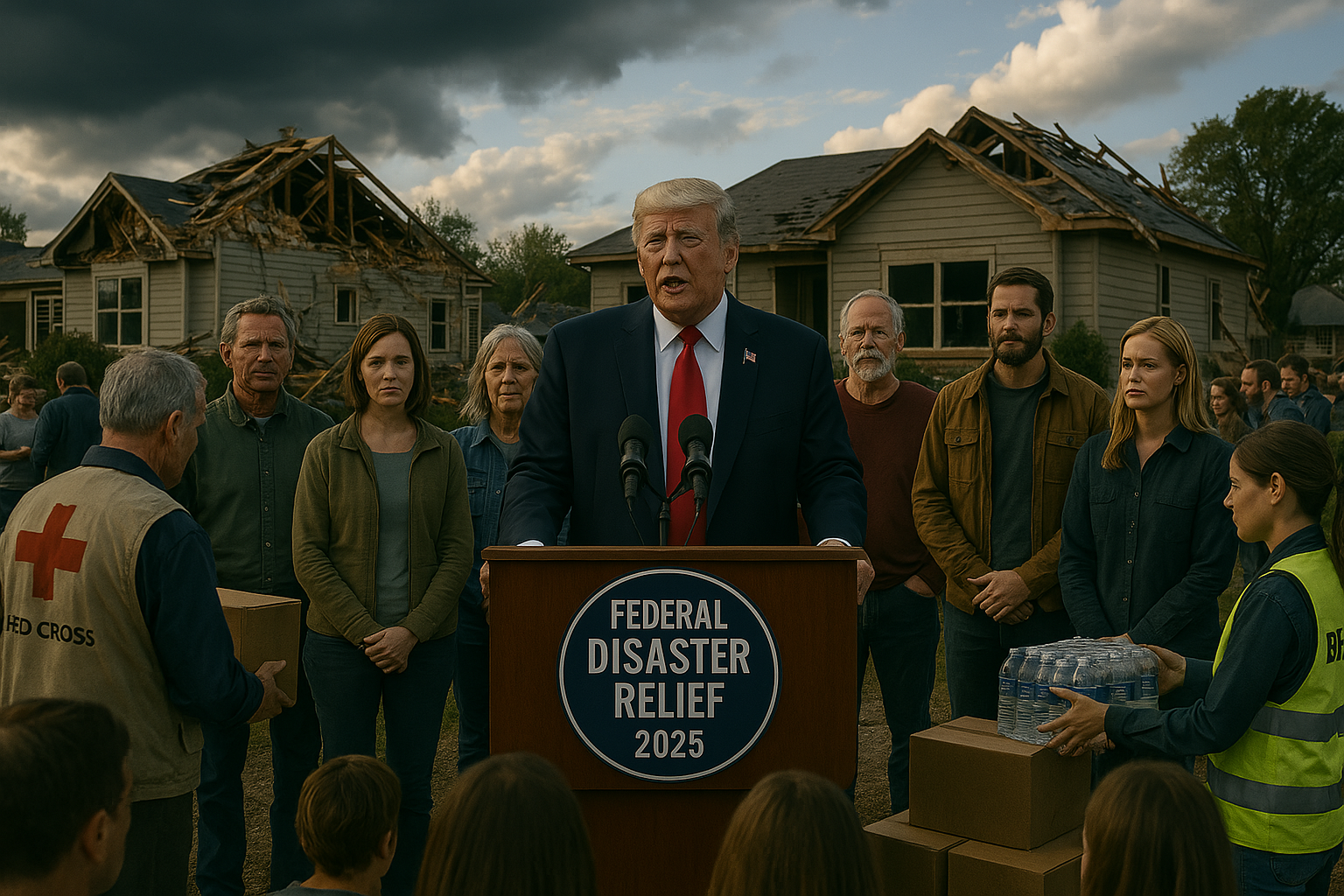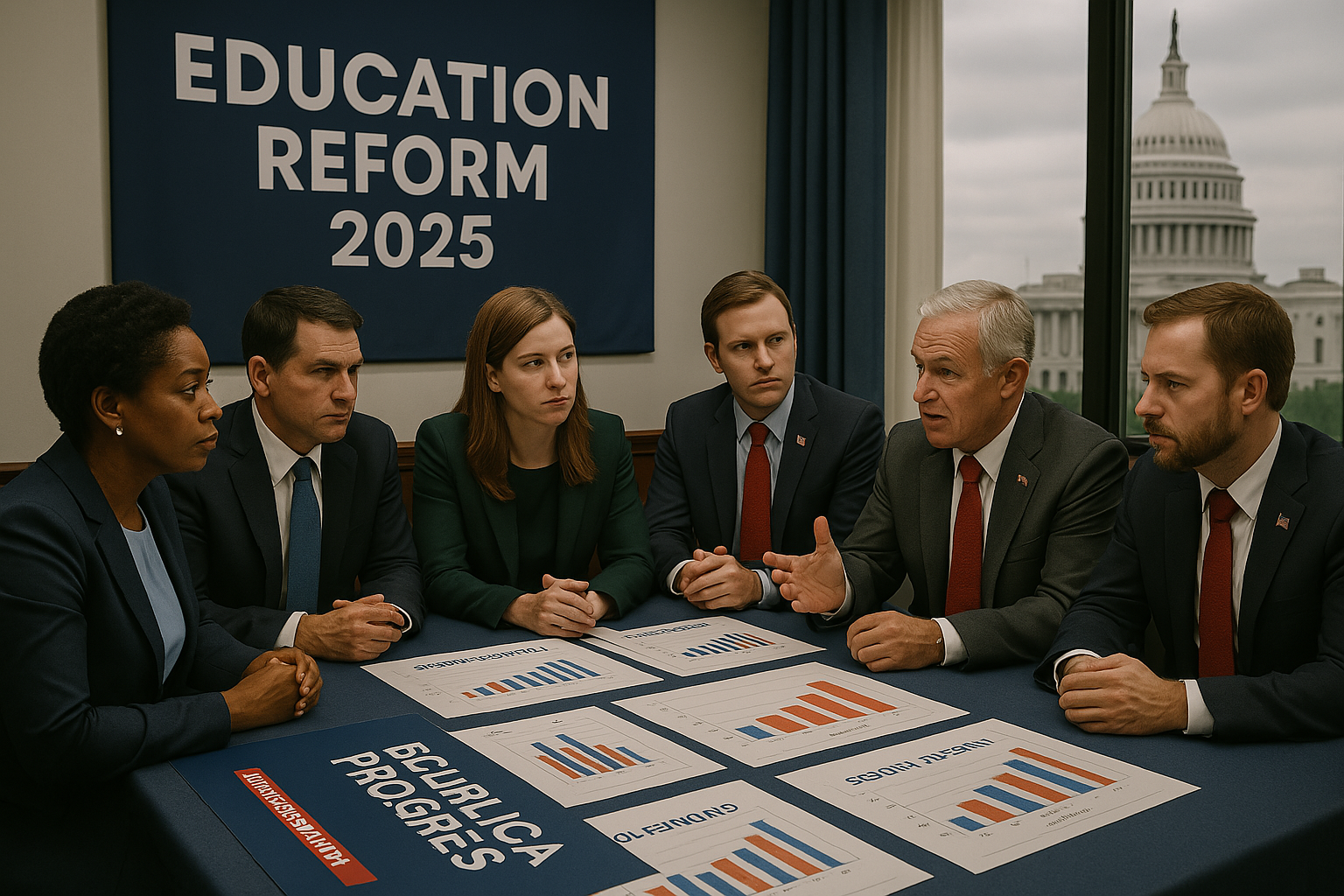Trump Approves $130 Million in Disaster Relief for Four States: A Response to Devastating Storms

On July 22, 2025, President Donald Trump announced the approval of over $130 million in disaster relief funding for West Virginia, Indiana, Michigan, and Kentucky, addressing the severe impacts of recent storms, tornadoes, and flooding in these states. The announcement, detailed in a Newsweek article published on July 23, 2025, highlights the federal response to natural disasters that caused significant loss of life, property damage, and infrastructure challenges. This article examines the specifics of the funding allocations, the context of the disasters, the political and societal implications of the relief efforts, and the ongoing debate over federal disaster management policies under the Trump administration.
Details of the Disaster Relief Funding
The total relief package amounts to $132.8 million, distributed across four states to support recovery from distinct natural disasters:
- Kentucky: The state, led by Democratic Governor Andy Beshear, received the largest share, totalling $56 million across two federal disaster declarations. This includes $28.9 million for storms in April 2025 and $27.1 million for storms in May 2025. The funding aims to address widespread damage from tornadoes and flooding, which caused significant infrastructure losses and displaced numerous residents.
- Michigan: Governor Gretchen Whitmer, a Democrat, secured $50 million for public assistance to recover from severe winter storms earlier in 2025. These storms brought heavy snow, ice, and power outages, necessitating federal aid for repairs and community support.
- Indiana: Republican Governor Mike Braun was granted $15.1 million to address severe flooding and tornadoes that struck in spring 2025. The disasters led to evacuations and repair costs that exceeded state emergency funds, prompting federal intervention.
- West Virginia: Under Republican Governor Patrick Morrisey, the state received $11.7 million for relief efforts following severe tornadoes and flooding in June 2025. The Associated Press reported at least six deaths, with the National Weather Service documenting extensive property and infrastructure damage.
President Trump announced these allocations via posts on Truth Social, emphasizing his direct communication with the governors and his commitment to supporting recovery efforts. For example, he stated, “It is my Great Honour to grant $11.7 Million Dollars to the beautiful State of West Virginia, for severe tornadoes and flooding that impacted their incredible people in June,” and expressed similar sentiments for the other states.
Context of the Disasters
The disasters prompting this relief reflect a broader trend of increasing extreme weather events across the United States, attributed by many experts to climate change. In Kentucky, the April and May storms caused widespread flooding and tornado damage, overwhelming local resources. Michigan’s winter storms disrupted power and transportation, while Indiana’s spring flooding led to evacuations and significant economic losses. West Virginia’s June tornadoes and floods, which killed at least six people, left communities grappling with destroyed homes and infrastructure. These events underscore the growing need for robust disaster response mechanisms, as states face escalating costs and recovery challenges.
The Newsweek article included a map illustrating the affected states, highlighting their geographic distribution across the Midwest and Appalachia. The funding is intended to cover public assistance programs, including infrastructure repairs, emergency response costs, and support for affected households, though specific allocations for individual versus public assistance were not detailed in the announcement.
Political and Societal Implications
The announcement comes amid heightened scrutiny of the Trump administration’s disaster relief policies. Critics, including former administration officials, have accused Trump of politicizing aid, citing past instances where he allegedly withheld funds from states with Democratic leadership, such as California, Washington, and Puerto Rico, due to political differences. For example, in 2020, Trump reportedly denied wildfire relief to Washington state because of his disputes with then-Governor Jay Inslee. Similarly, a 2025 FEMA denial of aid to Washington after a bomb cyclone sparked controversy, with the agency claiming the request did not meet Stafford Act criteria.
In this case, the inclusion of Democratic-led states like Kentucky and Michigan suggests an effort to counter accusations of partisanship. However, the administration’s broader agenda to reduce federal involvement in disaster management has raised concerns. Trump has proposed shifting more responsibility to state and local governments, including potentially phasing out FEMA after the 2025 hurricane season. A May 2025 decision to end FEMA’s Building Resilient Infrastructure and Communities program, which supported disaster preparedness, drew lawsuits from 20 states claiming the move would cost taxpayers billions by neglecting preventive measures.
The Texas floods in July 2025, which left 161 people missing and prompted a $30 million community fundraising effort, further highlighted tensions over federal disaster response. While Trump visited Texas and praised FEMA’s deployment of 500 staff and $132 million in aid, critics noted his earlier suggestions to overhaul or eliminate the agency, creating uncertainty about long-term federal support.
Community and Stakeholder Reactions
The disaster relief announcements were met with mixed reactions. Governors across the four states expressed gratitude, with Kentucky’s Andy Beshear noting that “our people are doing a very good job” and thanking Trump for the approval. Michigan’s Gretchen Whitmer and Indiana’s Mike Braun similarly acknowledged the federal support as critical for recovery. In West Virginia, Governor Patrick Morrisey emphasized the state’s need for a “full recovery,” aligning with Trump’s message of solidarity.
However, some analysts and state officials remain wary. Democrats on the House Oversight Committee, led by California Representative Robert Garcia, have pressed for transparency on federal response strategies, particularly after the Texas floods exposed gaps in preparedness. Critics argue that the administration’s push to reduce FEMA’s role could strain states with limited fiscal capacity, especially in the face of increasingly frequent and severe disasters. A New York Times report noted that FEMA has lost 25% of its full-time staff in 2025, including key disaster response coordinators, raising concerns about the agency’s capacity to handle future crises.
Public sentiment, as reflected in posts on X, showed appreciation for the funding but also skepticism about its sufficiency and the administration’s motives. Some users highlighted the contrast between Trump’s aid approvals and his earlier threats to withhold disaster relief from states like California unless they met conditions like enacting voter ID laws.
Broader Societal Context
The disaster relief announcement occurs against a backdrop of growing public concern about climate-driven extreme weather. A July 2025 Insurify report identified states like Louisiana, Florida, and Texas as facing the highest per-person losses from natural disasters, with Texas alone incurring $277 million annually from flooding and hurricanes. The increasing frequency of such events has amplified calls for resilient infrastructure, yet the Trump administration’s decision to cut $882 million from FEMA’s preparedness grants and $60 million from NOAA’s weather research has drawn criticism from experts who warn of diminished disaster response capabilities.
The debate also intersects with broader political tensions. Trump’s disaster relief approvals are seen by some as an attempt to bolster his image amid controversies, such as the release of Jeffrey Epstein files and allegations of withholding aid for political leverage. A Pew Research Center poll from July 2025 indicated that 62% of Americans support increased federal investment in disaster preparedness, reflecting public demand for robust federal support despite the administration’s push for state-led recovery.
Conclusion
The $132.8 million in disaster relief for Kentucky, Michigan, Indiana, and West Virginia represents a significant federal response to recent natural disasters, providing critical support for communities reeling from storms and flooding. However, the allocations come amid ongoing debates over the Trump administration’s disaster management policies, which prioritize reduced federal involvement and face criticism for delaying or denying aid to some states. As extreme weather events intensify, the balance between federal and state responsibilities will remain a contentious issue, with implications for public safety, economic recovery, and political trust. The affected states now face the challenge of leveraging this funding to rebuild while navigating an uncertain future for federal disaster support.









